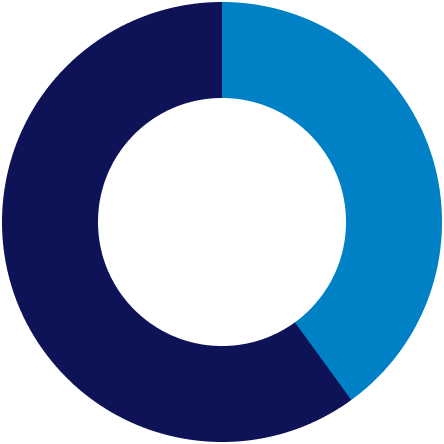
Congratulations on your new revenue leadership assignment!
In any new job it is critical to get started on the right path. That means quickly discovering the strengths, limitations and untapped potential of your revenue organization, determining how your marketing, sales and service teams measure up to internal and external benchmarks, as well as tuning revenue growth strategy and enablement tools.
And there probably is not much time to waste.
At Alexander Group we have the opportunity to interact with revenue leaders from preeminent organizations—companies that deploy every sales model imaginable, across a broad spectrum of industries. We understand how to equip multi-channel revenue organizations and place them squarely on the path to profitable revenue growth through sales.
We’re happy to share some of what we’ve learned in this publication for Chief Revenue Officers. And we hope this booklet provides you with some useful ideas that help in the transition to your new leadership role.
We wish you great success. Please call upon us if we can help.
Best regards,
Gary Tubridy
Sr. Vice President, Alexander Group Inc.
These are not easy questions to answer. Taking the time to consider these questions will help you build a more effective sales organization, one that is well-equipped to both meet your company’s growth objectives and the needs of your customers.

What business problems do our customers struggle with the most?
In today’s fast-paced selling environment, the quicker you can determine what the customer’s business problems are—the faster you know how your products and services can help solve them.
That means moving conversations with clients away from product, and into a business discussion, one that focuses on what you can do to help them make more money, spend less or both.
Doing this well means equipping your sellers to deeply understand…
- Issues that customers struggle with the most
- Why your approach is better than the competitive alternative
- Decisions the customer must make and who will make them in the buying process
- How your products address customer business issues...or opportunities
- Cost the customer pays for not addressing these issues/ opportunities
Are your sellers equipped?
Are they clear on which problems to solve for customers and why their approach is unique and better than the competition? Sales organizations need a steady source of insight, mined from the customer base, into how your company helps its customers improve their business. That is what pivots the dialog from price to value. If your sellers do not have regular access to such insights, it may be time to provide it.

How do our products and services uniquely help customers manage these problems?
There are many ways to do this. Top executives at SAP who understand the SAP technology roadmap connect with their executive peers at customers to collaborate on solutions that benefit both companies. Forming a group of Focus Executives that are tasked with forging these customer connections can position your company as an integral contributor to your customers’ strategic direction—and solidify your relationship as a value-added partner.
At another large technology company, the sales enablement group mobilizes teams of interns to go out and talk to their top sellers and gather the data on best practices. These best practices don’t just cover the “wins”—but feed the sales organization with new ideas of what works best at all stages of the sales process, and provide key insights on what customers
value most.
Calibrate impact of product to the customer—and avoid words like “significantly”
Emphasize what their product can do better than the competition
Find impact that is meaningful enough to matter to the customer
Provide evidence of product and solution superiority
Find the hidden insights in your organization to illustrate what your company can do to help value-centric customers improve their businesses.

Which buyers care most about having our sales team bring expertise and value?
Every business has a segment of customers who fall into the value category—solution seekers that care about and will pay a premium to vendors that deliver value and insights to help them grow their businesses.
The solution-seeker segment is large—and 83% of Sales Pulse Survey respondents believe this segment is either growing or rapidly growing. Consequently, they are investing in resources to acquire more customers in this segment.
Solution seekers represent the biggest customer segment.

SOLUTION SEEKERS

PRODUCT SEEKERS

PRICE SEEKERS
But even within this segment of solution seekers who are willing to have long-term relationships, want to talk about more than price, and have long-term contracts available—you have a population of BUYERS.
The buyer who can make decisions based on “impact to the business” is not in procurement. These “value” buyers are in the C-suite. Are you reaching them? With the right message? With the resources that can make a difference? This requires your message and resources are both powerful and believable. And differentiate you from the competition.
Segment your buyers to target commodity decision-makers with low-cost resources where possible; and reserve high-value key account resources, equipped with messages that matter, for the executive level.
The solution-seekers segment is growing faster than all other segments.

What marketing, sales and services resources are needed to address customers’ issues?

Customer types typically fall into the following four categories:
Low Emphasis Accounts
Serve and Maintain
Conversion Targets
Penetration Potential
That have both high current sales numbers and the highest potential for more business. Such accounts require a combination of “hunting” and “farming” talent.
Specialty teams and industry experts should only be aligned with customers that have the highest potential sales and penetration potential.

What marketing, sales and services resources are needed to address customers’ issues?
Do you know how your sellers are spending their time and who they are talking to? What customers they are targeting? What products and services they are promoting—and how? How well are they balancing pre- and post-sales planning and execution?
And most importantly—how does current sales execution compare to your company’s corporate strategy and objectives? Sales execution needs to align with and support corporate objectives, and may need to be adjusted with coaching, metrics, goals, sales compensation and sales enablement tools.
Are your sales resources…
Targeting the right accounts, industries and buyers?
Promoting and discussing the right products and solutions?
Delivering the required margins?
Converting new customers while limiting churn among old customers?
Will your sales resources execute the revenue growth strategy?
You're not alone.
The more you do now to provide visibility as to what is working and what needs to be fixed and align your activities with your company’s overall revenue growth strategy, the more you will provide confidence that you are taking the steps needed to lead the organization and grow the business.
The competitive nature of sales and revenue growth make it difficult to learn how other companies succeed, but the Alexander Group is here to help you. The Alexander Group are first and foremost revenue growth consultants—but we provide revenue leaders with many ways to engage—from our CSE Forums, to custom studies and research, focus groups, executive roundtables, and the CSE Forum LinkedIn Group. We have built an executive leadership community that offers research, insights, networking and consulting services to the executive who is responsible for revenue growth.
Model™
About Alexander Group
Alexander Group understands your revenue growth challenges. Since 1985, we’ve served more than 3,000 companies across the globe. This experience gives us not only a highly sophisticated set of best practices to grow revenue—we also have a rich repository of unique industry data that informs all our recommendations. Aligning product, marketing, operations and finance efforts behind a successful sales organization takes insight and hard work. We help the world’s leading organizations build the right revenue vision, transform their organizations and deliver results.






